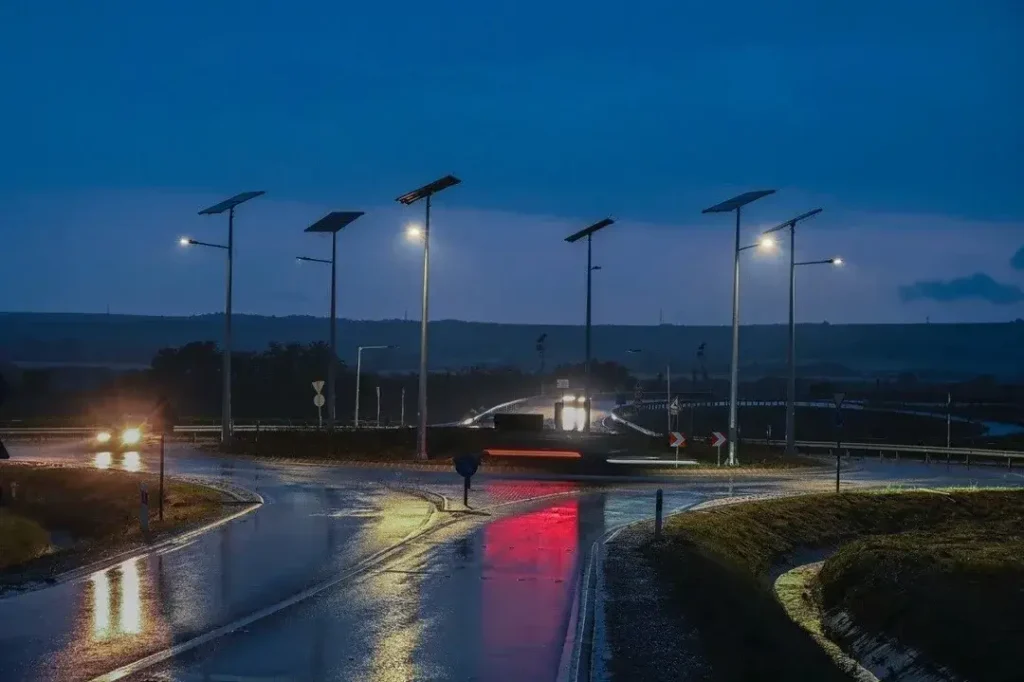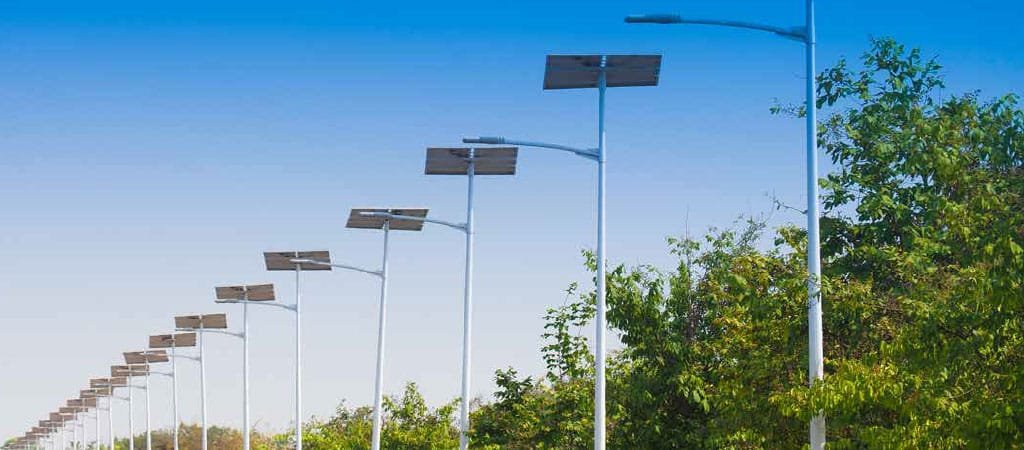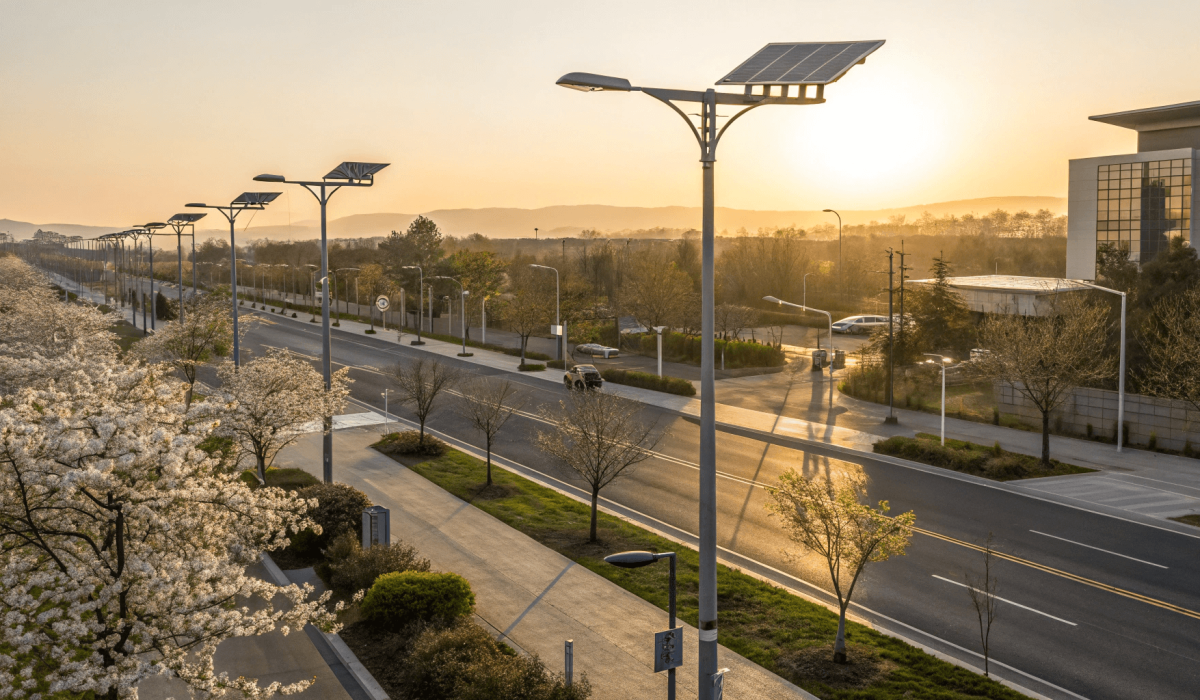Many cities and towns are turning to solar-powered street lights, hoping to cut electricity bills and reduce emissions. But far too often, these systems go dark—right when they’re needed most.
The leading cause of solar street light failure at night is inadequate energy storage—specifically, batteries that are poorly sized, outdated, or degraded and can’t hold enough charge to last until dawn.
Having worked with solar projects in diverse environments, I’ve seen how easily one weak link in the system—especially the battery—can compromise the entire investment.
How Do Solar Street Lights Work?
Even on sunny days, a badly configured system may still underperform.
At their core, solar street lights gather sunlight during the day and store it in batteries for use at night via energy-efficient LEDs.

A typical setup includes:
- Solar Panel – Harvests solar energy
- Battery – Stores that energy for later
- Controller – Ensures correct charging and operation timing
- LED Fixture – Converts stored energy into light
When even one component is mismatched—like an undersized battery—the entire system underdelivers.
Why Do Solar Street Lights Fail at Night?
Solar lights fading before dawn is a common complaint from municipalities.
Most problems ultimately point to one core: insufficient energy storage, whether it’s due to small capacity, poor-quality tech, or environmental wear and tear.
| Issue | Description | Result |
|---|---|---|
| Undersized Batteries | Can’t sustain light through the night | Premature blackout |
| Outdated Battery Tech | Lead-acid still used in outdoor conditions | Low efficiency, frequent failure |
| No Battery Management System | No protection against overcharge/deep drain | Reduces battery lifespan |
| Extreme Weather Exposure | High heat or cold accelerates wear | Reliability drops rapidly |
| Unbalanced System Design | Panel and battery mismatch | Inefficient power transfer |
In one city project I consulted, cloudy weather for two days rendered an entire neighborhood's lights useless—because their batteries couldn’t carry even a partial charge reserve.
Which Batteries Are Used in Solar Street Lights?
Not all batteries are made for solar environments—and many aren’t made for the outdoors at all.
LiFePO4 (Lithium Iron Phosphate) batteries currently offer the best performance-to-longevity ratio in solar street lighting.

| Battery Type | Lifespan (Cycles) | Efficiency | Maintenance | Size/Weight | Cost | Notes |
|---|---|---|---|---|---|---|
| Lead-Acid | 300–500 | 60–75% | High | Bulky | Low | Prone to corrosion, poor in extreme weather |
| Lithium-Ion | 1000–1500 | 85–95% | Low | Compact | Medium | Heat-sensitive, higher fire risk |
| LiFePO4 | 2000–3000 | 90–98% | Low | Compact | High | Stable across temps, best value long-term |
As shown in the chart above, LiFePO4 batteriess](https://www.streetlights-solar.com/whats-the-best-battery-for-solar-street-lights.html) last longer and perform better under tough outdoor conditions.
What Happens When Batteries Fail?
When batteries die early, it’s not just an engineering problem—it’s a public complaint waiting to happen.
Lights shut down too early, communities feel unsafe, and city departments face growing maintenance costs.
In 2019, I reviewed a solar lighting project in a Ugandan municipality—budgeted around $400,000. Within nine months, over 70% of the lights failed. Investigation revealed the contractor had installed indoor-grade lead-acid batteries without BMS. These batteries couldn’t withstand outdoor cycles and broke down rapidly during the rainy season.
The Consequences:
- Unsafe streets after midnight
- Public frustration toward city management
- Technicians overwhelmed with battery replacements
- Loss of trust in sustainable solutions
When the lights go out, so does the credibility of solar investments.
How to Ensure Your Solar Street Light Works All Night
Designing a reliable system isn’t about overbuilding—it’s about getting the details right from the beginning.
System longevity depends on the right battery, proper sizing, efficient components, and smart monitoring.

| Planning Step | Why It Matters |
|---|---|
| Proper Battery Sizing | Accounts for cloudy days and lighting needs |
| High-Efficiency LEDs | Uses less power for equal brightness |
| MPPT Controller Integration | Maximizes energy collection in all sun conditions |
| Advanced Battery Chemistry | Minimizes failure and extends service intervals |
| Remote System Monitoring | Allows predictive maintenance and fast repairs |
We’ve found that the best-performing systems combine LiFePO4 batteries, MPPT controllers, and well-matched load profiles.
Case Study: When Everything Works Right
It’s not just theory—here’s a project that got it all right.
In Southeast Asia, a coastal road project used LiFePO4 batteries, MPPT controllers, and salt-resistant LED housings.
- Project Size: 180 solar poles
- Environment: High humidity, saline air, monsoon clouds
- System Design: Sealed IP66 fixtures, MPPT controllers, LiFePO4 banks
- Outcome after 18 months:
- <3% failure rate
- Lights lasted through 2–3 consecutive cloudy days
- 40% reduction in technician visits
Feedback from the local contractor: “We were skeptical at first about the higher battery cost. But maintenance calls dropped so much, we recovered the investment in under a year.”
Conclusion
We’ve found again and again: reliable performance isn’t about sunshine—it’s about sound engineering.
Don’t let poor battery decisions compromise your solar street lighting project.
Get the system right from day one. Invest in quality batteries, use intelligent controls, and partner with manufacturers who understand real-world challenges—not just datasheets.


